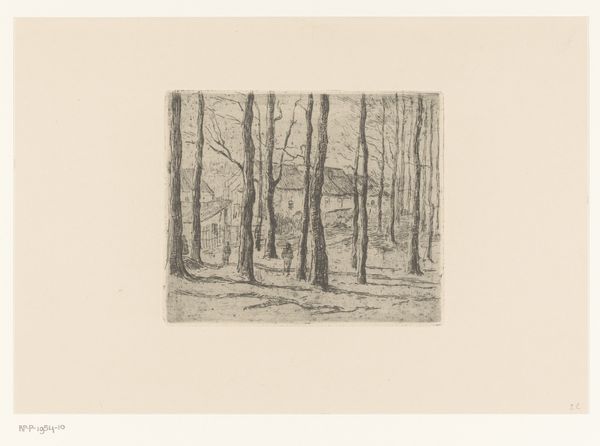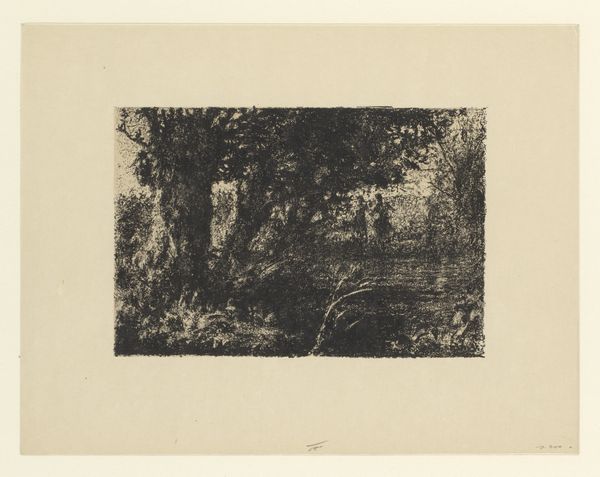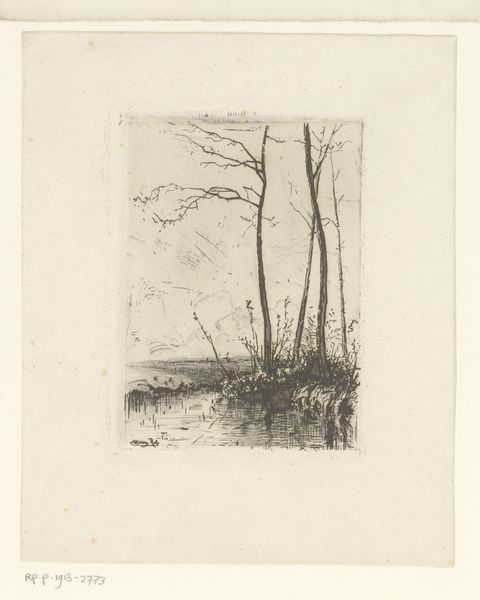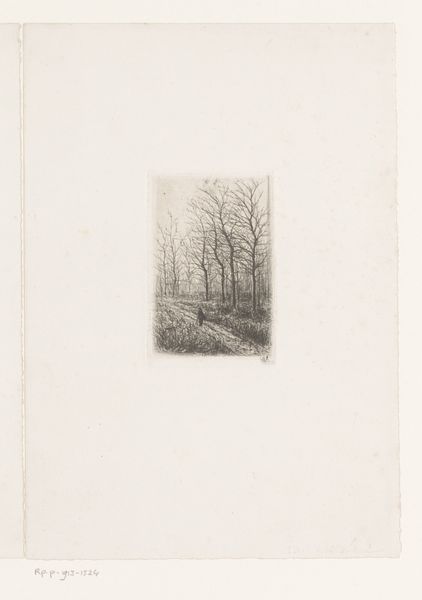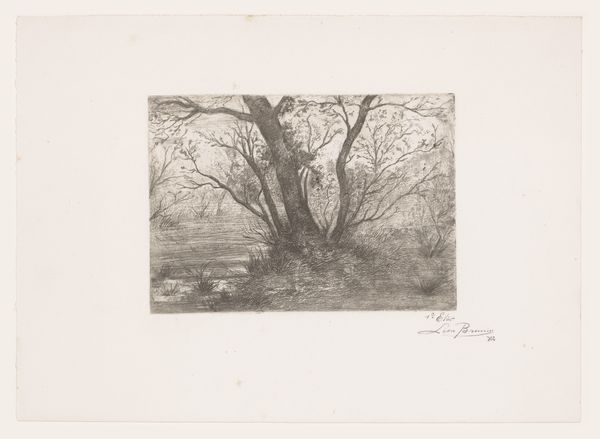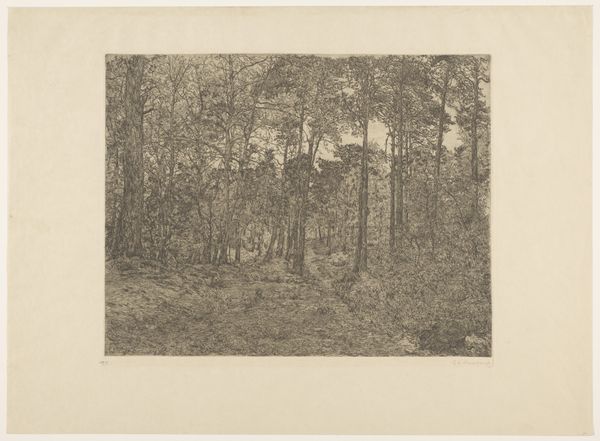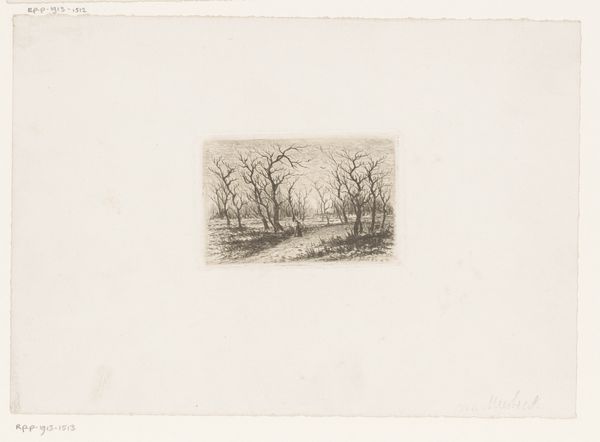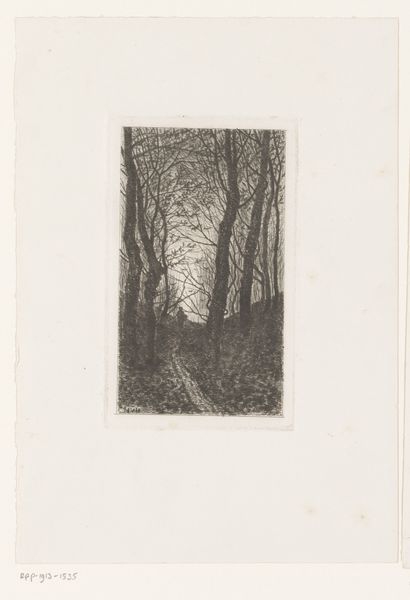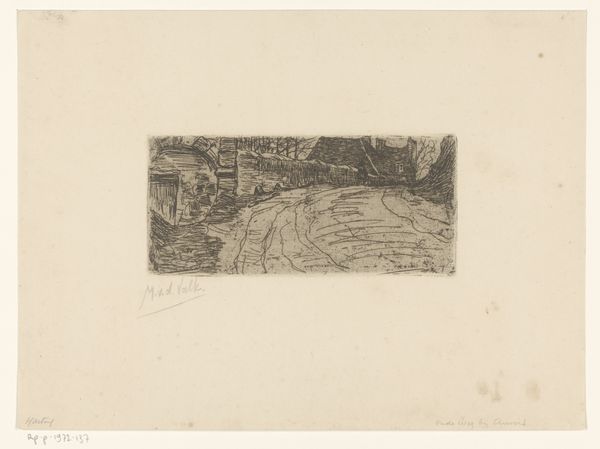
Gezicht op een park met bank en op de achtergrond huizen 1849 - 1910
0:00
0:00
Dimensions: height 120 mm, width 160 mm
Copyright: Rijks Museum: Open Domain
Editor: Here we have Karel Theodoor Hippert’s “Gezicht op een park met bank en op de achtergrond huizen,” an etching made sometime between 1849 and 1910. The bare trees give it a somber, almost desolate feel. What strikes you most about this print? Curator: I am drawn to the etcher's meticulous labor. Note how Hippert transforms metal into foliage, how acid becomes light and shadow. The act of repetitive, physical creation embedded in each line suggests a democratizing of art, where craft is seen as equal to high art. What can this depiction of the park and bench tell us about Dutch society during the period of production? Editor: It seems to romanticize nature, a common theme. The bench encourages contemplation… But, wouldn’t any social message be dependent on who has access to that park? Curator: Exactly! That's key. Etchings like this were more accessible than paintings, entering homes and shaping perceptions. Who could afford them? Did they reinforce existing class structures through an idealized nature? Moreover, what kind of labor and production was necessary to maintain this manicured “nature?” Editor: So, you're saying we shouldn’t just look at the image, but the entire system that allowed for its creation, distribution, and consumption? The etching process, the park's upkeep, the homes in the background… all indicators of the socio-economic landscape? Curator: Precisely. Hippert isn’t just showing us a park; he is unconsciously revealing a network of resources, labour, and social strata embedded in its depiction and the creation of the art object. Editor: I never considered the socioeconomic impact of the *making* itself. It's fascinating how a simple park scene opens up to such larger questions. Thanks for pointing out those material realities!
Comments
No comments
Be the first to comment and join the conversation on the ultimate creative platform.
